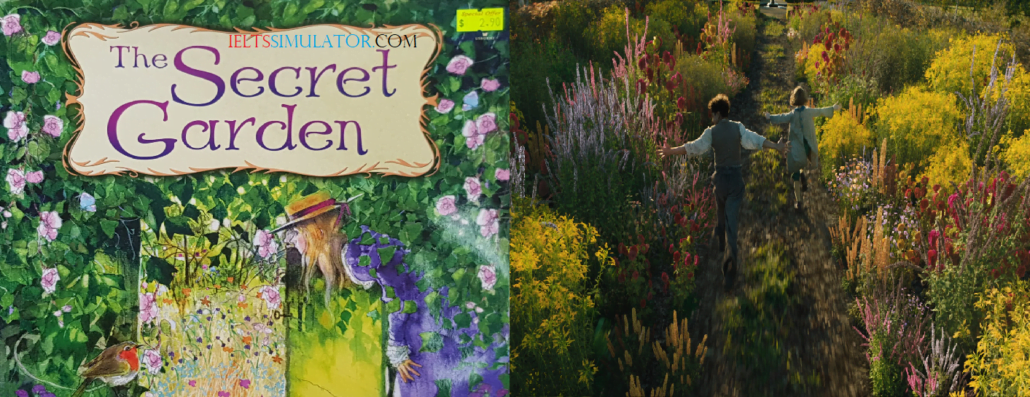
IELTS LISTENING S60T3
Transport from Bayswater
Tutor: Hello Lorna, Ian. Glad you could make it. You’re the only two who put your names down for this literature tutorial so let’s get started, shall we? I want to run over some aspects of the novel, Q21 The Secret Garden, with you before the test next week. Be sure to take some notes and ask questions if you need to.
Ian: Hey Lorna, have you got a spare pen?
Lorna: Sure, here you are.
Audio PlayerAttempt full listening test…
Tutor: Okay, so, the story follows two key characters – you should refer to them as protagonists – who go by the names of Mary Lennox and Colin Craven. The story is set shortly after the turn of Q22 the twentieth century, and the narrative tracks the development of the protagonists as they learn to overcome their own personal troubles together.
Lorna: That’s quite a common storyline, isn’t it?
Tutor: Yes, you’re right, Lorna. So, what can you tell me about the character of Mary?
Lorna: Well, in the beginning she is an angry, rude child who is orphaned after a cholera outbreak and forced to leave India and move to the United Kingdom to her uncle’s house in Yorkshire.
Tutor: That’s right – and there she meets Colin who spends his days in an isolated room, believing himself to be permanently crippled with no hope of ever gaining the ability to Q23 walk. The two strike up a friendship and gradually learn – by encouraging each other – that they can both become healthy, happy, and fulfilled in life.
Ian: Will we need to remember a lot of these details for the exam?
Tutor: Just the basic outline. Examiners don’t want to read a plot summary – they know what the book is about. Focus on narrative techniques instead, such as point of view.
Lorna: What’s that mean?
Tutor: It’s all about how we see the story. This story, for example, is written from the perspective of what is called an “omniscient narrator”. Omniscient means all-knowing. So, as readers we get to see how all the characters feel about things, what they like and don’t like, and what their Q24 motivations are in the story.
Ian: Won’t it be hard to write a technical analysis? After all, it’s a kids’ book.
Tutor: Well, it was initially pitched at adults you know, but over the years it has become seen as a more youth-orientated work. And you’re right in a sense – the simple vocabulary and absence of foreshadowing make the story very easy to follow and ideally suited for children. But that doesn’t mean there isn’t much to analyse. Look at the symbolism, for instance.
Lorna: Symbols are things, right? Material things – like objects – that stand for Q25 abstract ideas.
Tutor: Absolutely, yes. And the author uses many of them. There’s the robin redbreast, for example, which symbolises the wise and gentle nature that Mary will soon adopt – note that the robin is described as “not at all like the birds in India”. Q26 Roses are used as well – as a personal symbol for Mistress Craven – you’ll see they’re always mentioned alongside her name. And Mistress Craven’s portrait can also be interpreted as a symbol of her spirit.
Ian: Are symbols just another name for motifs?
Tutor: No, motifs are a bit different. They don’t have as direct a connection with something the way that a symbol does. Motifs are simply recurring elements of the story that support the mood.
Lorna: Are there any in this novel?
Tutor: Yes, two very important ones. The Garden of Eden is a motif. It comes up a few times in connection with the garden of the story. And then you’ve got the role that secrets play in the story. In the beginning, everything is steeped in secrecy, and slowly the characters share their secrets and in the process move from Q27 darkness to lightness, metaphorically, but also in the case of Colin, quite literally. His room in the beginning has the curtains drawn, and he appears at the end in the brightness of the garden.
Ian: Anything else we need to know about?
Tutor: Yes. Nearly all novels explore universal concepts that everyone has experienced – things like love, family, loneliness, and friendship. These are called themes. The Secret Garden has a few themes that all centre on the idea of connections. The novel explores, for example, the way that Q28 health can determine and be determined by our outlook on life. As Colin’s health improves, so too do his perceptions of his strength and possibility. The author also examines the link between our Q29 environment and our physical and emotional prosperity. The dark, cramped rooms of the manor house stifle the development of our protagonists; the garden and natural environments allow them to blossom, just as the flowers do. Finally, this book looks at connections between individuals, namely Mary and Colin. This necessity of Q30 human companionship is the novel’s most significant theme – because none of their development as individuals would have occurred without their knowing each other. Well, that about sums it up, I think.
Lorna: That’s a great help, thanks.
Ian: Yes, thanks very much.